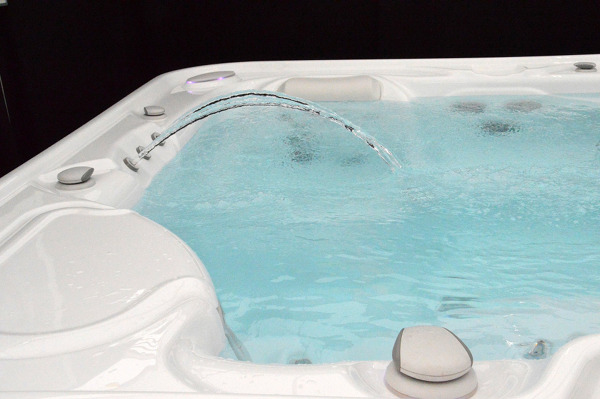
Reviewed by Andrada Simion, Master of Science in Chemistry
Nothing could be more relaxing after a long, hard day than a nice long soak in a beautiful, well-maintained hot tub – but your hot tub, like all pools, bathing vessels, and recreational equipment, requires proper use and careful maintenance and cleaning to keep it safe and sanitary, and if something goes awry, you may notice a mysterious sudsy foam sitting atop your water as soon as you turn on your tub’s jets. Noticing such a foam, however, should not be a cause for undue distress, as its formation is one of the most common hot tub maintenance issues; it can be the result of many causes, few of which should provoke too much alarm.
- Not showering before entering your hot tub. One of the leading causes of foam is water that is “full”; that is, if it is rich in floating contaminants that can cause foam in the particular temperature, chemical, and current conditions of a hot tub. Body products (like shampoo, conditioner, deodorant, lotions and skin creams, hair spray, and makeup) as well as body detritus (like the sweat, oils, loose hairs, and dead skin cells that naturally accumulate on human bodies) are common contaminants that can lead to fullness; by showering before entering the water, you can minimize the amount of these contaminants that enter the water (and, ergo, its “foaminess” potential).
- Not carefully rinsing your bathing suits before entering the water. If bathing suits (or other clothing worn in the hot tub) are dirty or contain detergent residues from machine washing, they can introduce chemicals into the water that cause fullness (and, therefore, foam). If you wash your suits and then carefully rinse them immediately before entering the hot tub (and on each and every occasion you use it), you can avoid this sort of contamination.
- Overly soft water. Water can be hard (rich in dissolved minerals, especially calcium) or soft (having only low levels of dissolved minerals); this tends to vary by region, and can also be affected by the frequency with which you drain your tub, the rate of evaporation, your cleaning protocols, any outside water flowing into the tub, and numerous other factors. Commercially available test strips (which can be found for low prices at any pool supply store or catalog) can tell you the calcium concentration of your water in seconds; if it is below the manufacturer recommended levels, this could be causing the foam that you observe when turning on the jets. This problem can be easily remediated by adding calcium chloride or another commercial hardening agent according to the directions on the package to re-equilibrate the mineral concentrations.
- Spilled beverages. While enjoying a cold soda in the hot tub might sound like an appealing exercise in contrasts, even small amounts of spilled beverages, especially sugary ones, can cause fullness and foaming. Unless you are very certain you will be able to avoid any spilling whatsoever, refraining from enjoying beverages (other than pure water, of course) while in your hot tub can help prevent future outbreaks of foam.
- Cheap hot tub maintenance chemicals. The greater quantity of cheap hot tub chemicals that one has to use (that is, as compared to higher quality, more concentrated chemical brands) can itself contribute to the dissolved solids in the pool that contribute to foaminess. Some of the cheapest chemicals can even leave a residue on your tub even after the water is changed, increasing the solid concentration and the foaminess potential for long periods of time and making your cleaning work less effective.
- High or low pH. The pH of a liquid is a measure of a crucial chemical property: how acidic or alkaline (basic) a liquid is. Keeping this balanced is a key tenet of all spa and pool maintenance; if it becomes disequilibrated, the water may begin to foam.
- Swimmers dunking their heads underwater. As mentioned above, oils and beauty products are key causes of foam – and no part of our body has more of both than our hair. If users dunk their heads underwater, this can increase the water’s fullness – and, consequently, making foaming likely.
- Outdoor detritus. It should go without saying that one should remove leaves, branches, sticks, and other natural debris that may fall in an outdoor hot tub – but if allowed to begin decomposing, these natural objects can cause severe foaming.
- Damaged or dirty filters. If your spa water filter needs to be changed, it will not filter particles as efficiently; this will increase dissolved solids in the water, making foaming likely.